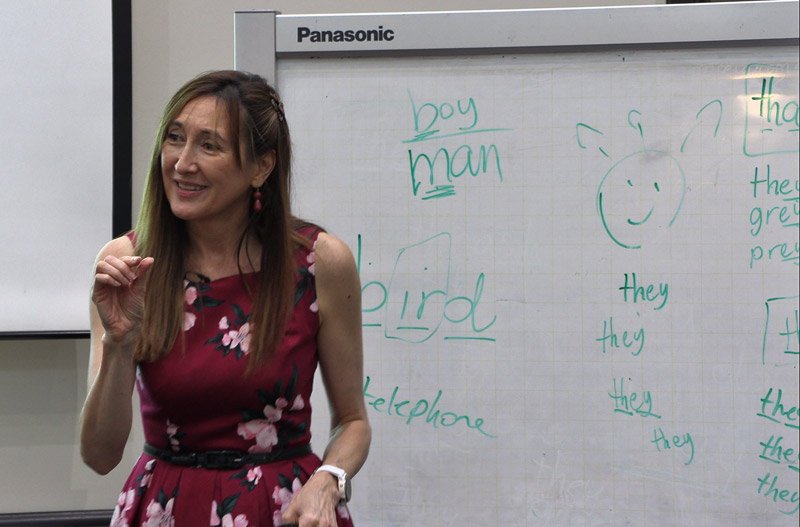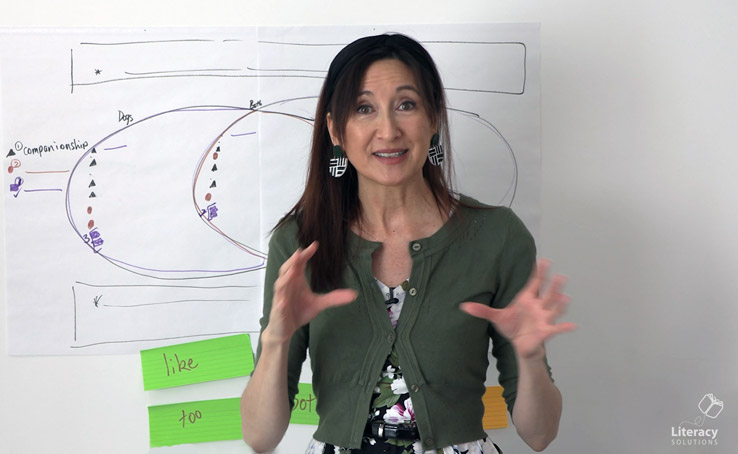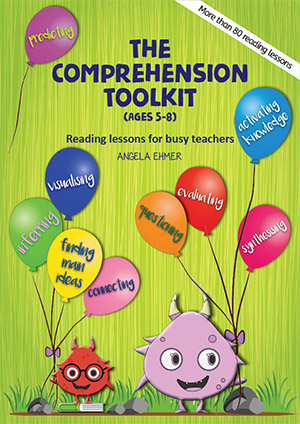Archive for the ‘Writing’ Category
Monday, 31 August 2020 at 8:28 am
Rubrics are the most common way to assess the quality of student writing samples when implementing the Six Traits of Writing . In response to schools we support and teacher requests for assistance with Six Traits’ rubrics, we are pleased to share our Rubric Scorer. This tool is simple to use and is easily applied to assess one or multiple Traits.
What is the …
Tags: Six Traits Rubric Scorer
Continued... | Posted in Writing | 1 Comment »
Monday, 27 April 2020 at 3:46 pm
Most children acquire vocabulary through real life experiences.
Research studies identify strong links between the working vocabularies of young children and their subsequent reading achievement levels. There is widespread agreement that vocabulary is one of the keys to reading. Not only is it a valuable predictor of reading success in the early years, but it continues to impact achievement levels well into secondary …
Continued... | Posted in Reading, Writing | Comments Off on Why vocabulary matters to reading and writing success
Tuesday, 21 August 2018 at 8:08 am
‘The Daily Write (Early Years)’ – A book of writing prompts for teachers of Years P-2.
The Daily Write (Early Years) is a 48 page publication containing stimulus pictures with accompanying writing prompts. The book is designed for teachers to use as a shared text in poster format.
Daily writing, even for short periods of time, supports students to generate ideas, develop fluency of thinking, translate …
Continued... | Posted in Writing | Comments Off on The Daily Write (Early Years)
Sunday, 4 March 2018 at 6:40 pm
‘The Daily Write’ – A book of writing prompts for teachers of Years 2-6.
The Daily Write is a 48 page publication containing stimulus pictures with accompanying writing prompts, suitable for individual, or whole class use. The book is printed in full colour to enable teachers to remove and laminate pages and store as part of a classroom learning centre if desired.
Daily writing, even for …
Continued... | Posted in Writing | Comments Off on The Daily Write
Wednesday, 15 November 2017 at 11:11 am
Cheerful Pens, Mastery Circuit, Sliding Cards, The Reading Wall, (Higher yield) Reading Stamina and Peer Tutoring
This is for those who’ve asked, formally and informally over the years. Our conversations have been short and often rushed. In workshops and consulting, the focus is on teaching or demonstrating the strategies, but time never permits a fuller explanation about where the ideas originated and what underpins them. As …
Tags: cheerful pens, Higher yield reading stamina, Literacy ideas, mastery stations, Peer Tutoring, sliding cards, The Reading Wall
Continued... | Posted in Literacy general, Reading, Writing | 1 Comment »
Tuesday, 14 November 2017 at 7:49 am
The Mastery Circuit was inspired by learnings in education, psychology, neuroscience and marketing … But mostly by Dame Marie Clay and her insistence that hard to teach students must overlearn one element every day while participating in the Reading Recovery Program.
Though this idea does not guarantee memory of subskills for all learners 1, it is highly effective for many. Background notes for this strategy are …
Tags: Hardwiring, Mastery Circuit, overlearning
Continued... | Posted in Writing | 8 Comments »
Sunday, 22 October 2017 at 8:11 pm
Hi All
I hope you’ve been well and enjoying a productive year. It’s been ages since I posted. As some of you know, our blog had been taken down. Thank you to Glenda who advised our blog had been spammed with inappropriate material. This has only just been resolved and we’re back in action. As a result, I have a number of entries from earlier this …
Tags: gimmicks, literacy, pedagogy
Continued... | Posted in Literacy general, Reading, Writing | 3 Comments »
Tuesday, 14 June 2016 at 10:21 am
In problem/solution texts, the author presents a problem and one or more potential solutions. Only one significant problem and solution may be presented in simpler texts. In longer, more complex texts there may be one main or overarching problem, in addition to one or multiple smaller complications, all or most of which are usually resolved. Some texts feature multiple complications which together create one main …
Tags: graphic organisers, problem/solution
Continued... | Posted in Literacy general, Reading, Writing | Comments Off on Problem/Solution (Part 7 of 7)
Sunday, 5 June 2016 at 10:57 am
In a description the author describes, lists, explains or highlights attributes, features and characteristics of people, things or places. In body paragraphs there may be one main, or central idea, which can be identified by locating a topic sentence or summary sentence, or by inferring a connection between ideas across sentences. Examples, analogies, explanations or elaborations provide details about the significant idea. A description, …
Tags: graphic organisers, List/Description
Continued... | Posted in Literacy general, Reading, Writing | Comments Off on List/Description (Part 6 of 7)
Monday, 30 May 2016 at 7:50 am
When comparing/contrasting an author shows how two or more elements are alike and different. When the items are compared, their similarities are explored; when they are contrasted, their differences are highlighted. Some texts only compare and are therefore comparing texts; some texts only contrast and are therefore contrasting texts. Texts which do both are considered compare and contrast.
Signal words:
advantage, although, as opposed to, as well …
Tags: compare/contrast, graphic organisers
Continued... | Posted in Literacy general, Reading, Writing | Comments Off on Compare/Contrast (Part 5 of 7)




